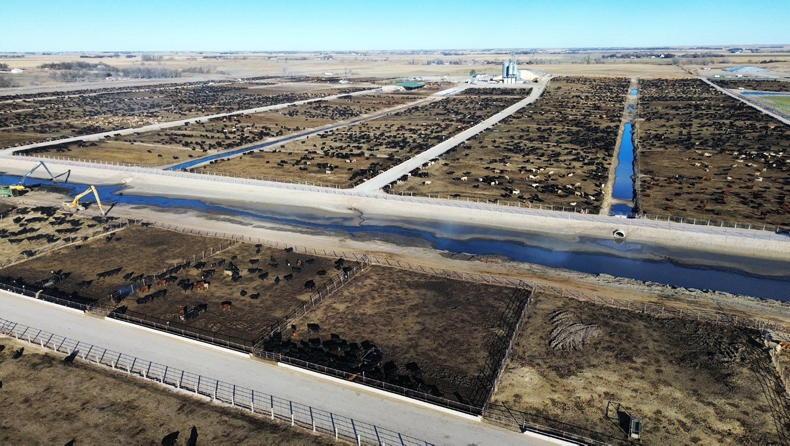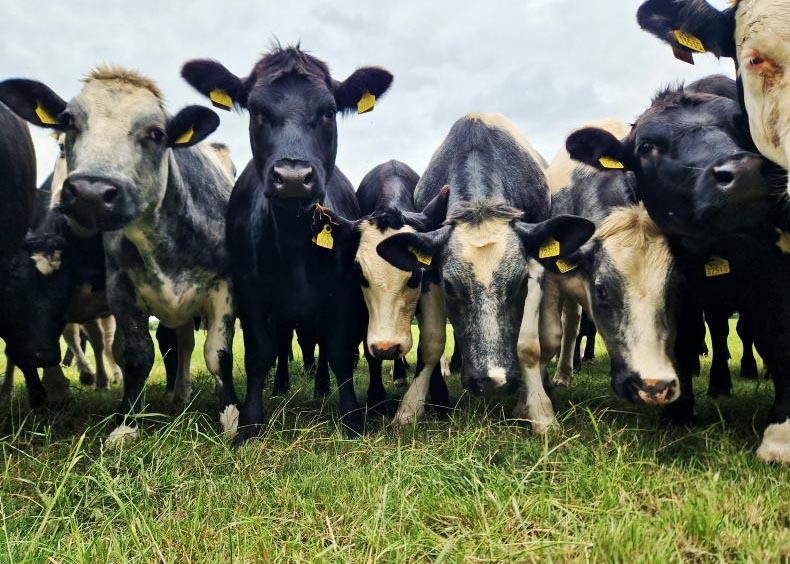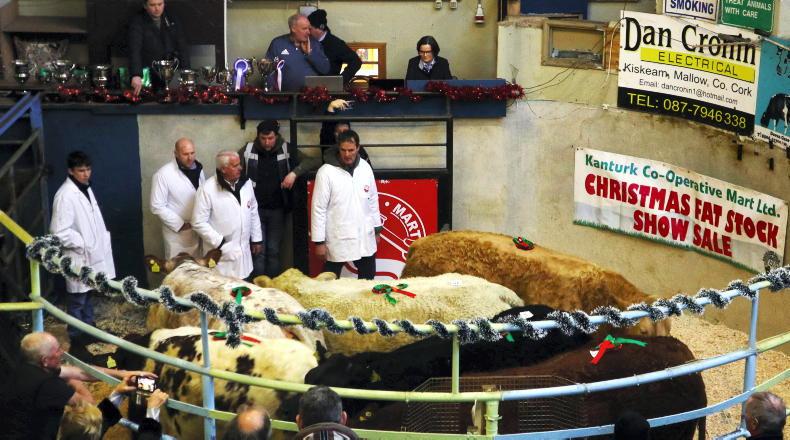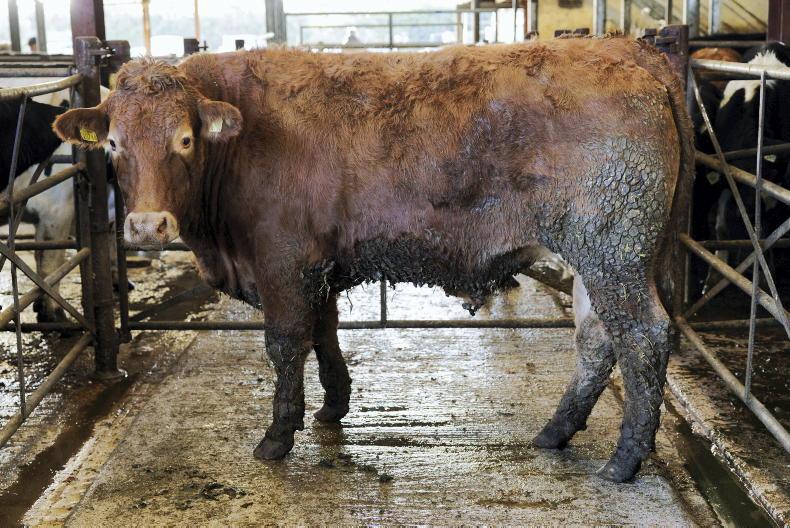April and May will see a growing number of farmers looking to purchase store cattle for grazing, before housing animals for a short intensive finishing period next winter.
Most farmers will source stores through the live ring, as there is a bigger range of cattle available. But there are plenty of farmers that buy stores direct from other farms.
Regardless of the preferred option for purchasing stores, it is important that farmers operating drystock systems have some kind of budget in mind before going out to buy cattle.
Things to consider include purchase price, weight and type of cattle, grazing inputs, when animals will finish and concentrate requirements to bring animals to slaughter fit condition.
Tally up the projected input costs and use slaughter data from previous years to get a handle on break-even beef price needed when animals are finished.
Having an idea of that break even price will help to decide on which type of animals to buy and what is affordable.
Realistic inputs
The key part of any budget is using realistic inputs, weight gains and prices to predict if a margin can be made from buying stores to graze and finish.
There is little point completing the exercise using inflated carcase weights or purchase prices not representative of the cattle likely to be purchased.
Farmers with experience at buying and finishing stores will have a good understanding of what cattle will suit their system.
But for farmers thinking of getting into a store to beef system in 2024, outlined is an example of a simple budget to see if a margin is possible.
Completing a budget
for grazing stores
Table 1 is a budget for our example farm, where the owner wants to buy 30 store heifers for grazing and finishing as a new venture.
Store cattle will run alongside other livestock systems on farm which operate all year round. Heifers are purchased at an average liveweight of 450kg from 10 to 20 April.
Cattle purchased are suckler bred animals sired by good quality continental sires. Based on average mart prices over the past fortnight, the heifers cost 300p/kg or £1,350 per head.
Heifers are rotationally grazed on productive land with good quality swards of ryegrass and white clover.
The grazing platform for the heifers extends to 25 acres (10ha), with any surplus grass taken out as baled silage to maintain sward quality.
Based on the number of cattle grazed, and taking individual animals at 0.6 livestock units (LU), that gives a stocking rate of 1.8LU/ha.
Grazing
Over the course of the grazing season, swards receives three bags per acre of CAN which is purchased at £315/t. On 25 acres, that comes to 3.75t, costing £1,181 or £39/head.
Heifers are wormed twice over the season and get an oral mineral drench during each treatment, which comes to £15/head.
Animals are grazed on average from 20 April to 10 October, which gives a grazing season of just over 170 days.
Heifers are offered 2kg/day of concentrate, costing £280/t, for 40 days prior to housing, which comes to £22/head.
Other costs over the grazing season include £15/head to cover miscellaneous items, such as electric fencing materials. That brings the grazing costs to £91/head.
Housing and finishing
Heifers are housed on 10 October and assuming an average daily liveweight gain of 0.9kg/day at grass, housing weight averages 605kg.
Heifers are intensively finished over 50 days, or a seven-week period, with the time of sale coinciding with processors sourcing animals for the Christmas trade.
Animals get fluke and lice treatments to maximise weight gain during the finishing period, with the product used having appropriate withdrawal dates. This comes to £15/head and includes an allowance for any miscellaneous items, like replacement tags.
Concentrate feed starts at 4kg/day, increasing to 6kg/day to get animals to an adequate fat cover prior to slaughter.
Taking an average 5kg/day, heifers consume 250kg of concentrate at £280/t, which comes to £70/head. Silage averages 30kg/day for the 50 days, which at £28/t comes to £42/head.
Heifers achieve an average liveweight gain of 1kg/day or 50kg during the housing period, bringing the final weight to 655kg.
Fixed costs
All farms have fixed costs to cover, regardless of the livestock enterprise in place. Fixed costs include machinery running costs, contractor charges, shed maintenance, insurance, electricity, borrowings and hire purchase repayments.
Taking fixed costs around £500/ha per year for a lowland farm, on the 30 heifers this comes to £166/head.
A profit margin of £100/head is included to provide a return on capital and time invested in the store cattle enterprise.
Break even
For heifers slaughtered at 655kg liveweight at an average kill-out of 56%, carcase weight works out at 366kg.
Adding up purchase cost, grazing and finishing costs, plus fixed costs and £100 margin, that brings the break even figure to £1,834.
On a 366kg carcase, the farmer needs a break even price of 501p/kg to cover all inputs and get the required return on their investment.
Altering the purchase price by 10p/kg will change the break even beef price by 12p/kg, while halving the £100 margin for time and return on investment changes break even price by a similar amount.
All costs outlined are hypothetical, but are not unrealistic for a store to beef finishing unit. The important thing is to use inputs likely to
reflect individual farms.
The budget assumes cattle thrive to their potential at all times and that weather is on the farmer’s
side for grazing animals into mid-October. A wet summer and early housing changes the economics.
Plainer cattle could be purchased for less money. But animals of lower genetic merit are less likely to achieve the outlined weight gains or kill-out figures in the budget.
Ultimately, the main takeaway for the example farmer is to do their sums carefully, as the margins in purchasing cattle to graze and
finish towards the year end remain slim.
Read more
Top 10 tips for buying a new stock bull
Five tips for closing off silage ground
April and May will see a growing number of farmers looking to purchase store cattle for grazing, before housing animals for a short intensive finishing period next winter.
Most farmers will source stores through the live ring, as there is a bigger range of cattle available. But there are plenty of farmers that buy stores direct from other farms.
Regardless of the preferred option for purchasing stores, it is important that farmers operating drystock systems have some kind of budget in mind before going out to buy cattle.
Things to consider include purchase price, weight and type of cattle, grazing inputs, when animals will finish and concentrate requirements to bring animals to slaughter fit condition.
Tally up the projected input costs and use slaughter data from previous years to get a handle on break-even beef price needed when animals are finished.
Having an idea of that break even price will help to decide on which type of animals to buy and what is affordable.
Realistic inputs
The key part of any budget is using realistic inputs, weight gains and prices to predict if a margin can be made from buying stores to graze and finish.
There is little point completing the exercise using inflated carcase weights or purchase prices not representative of the cattle likely to be purchased.
Farmers with experience at buying and finishing stores will have a good understanding of what cattle will suit their system.
But for farmers thinking of getting into a store to beef system in 2024, outlined is an example of a simple budget to see if a margin is possible.
Completing a budget
for grazing stores
Table 1 is a budget for our example farm, where the owner wants to buy 30 store heifers for grazing and finishing as a new venture.
Store cattle will run alongside other livestock systems on farm which operate all year round. Heifers are purchased at an average liveweight of 450kg from 10 to 20 April.
Cattle purchased are suckler bred animals sired by good quality continental sires. Based on average mart prices over the past fortnight, the heifers cost 300p/kg or £1,350 per head.
Heifers are rotationally grazed on productive land with good quality swards of ryegrass and white clover.
The grazing platform for the heifers extends to 25 acres (10ha), with any surplus grass taken out as baled silage to maintain sward quality.
Based on the number of cattle grazed, and taking individual animals at 0.6 livestock units (LU), that gives a stocking rate of 1.8LU/ha.
Grazing
Over the course of the grazing season, swards receives three bags per acre of CAN which is purchased at £315/t. On 25 acres, that comes to 3.75t, costing £1,181 or £39/head.
Heifers are wormed twice over the season and get an oral mineral drench during each treatment, which comes to £15/head.
Animals are grazed on average from 20 April to 10 October, which gives a grazing season of just over 170 days.
Heifers are offered 2kg/day of concentrate, costing £280/t, for 40 days prior to housing, which comes to £22/head.
Other costs over the grazing season include £15/head to cover miscellaneous items, such as electric fencing materials. That brings the grazing costs to £91/head.
Housing and finishing
Heifers are housed on 10 October and assuming an average daily liveweight gain of 0.9kg/day at grass, housing weight averages 605kg.
Heifers are intensively finished over 50 days, or a seven-week period, with the time of sale coinciding with processors sourcing animals for the Christmas trade.
Animals get fluke and lice treatments to maximise weight gain during the finishing period, with the product used having appropriate withdrawal dates. This comes to £15/head and includes an allowance for any miscellaneous items, like replacement tags.
Concentrate feed starts at 4kg/day, increasing to 6kg/day to get animals to an adequate fat cover prior to slaughter.
Taking an average 5kg/day, heifers consume 250kg of concentrate at £280/t, which comes to £70/head. Silage averages 30kg/day for the 50 days, which at £28/t comes to £42/head.
Heifers achieve an average liveweight gain of 1kg/day or 50kg during the housing period, bringing the final weight to 655kg.
Fixed costs
All farms have fixed costs to cover, regardless of the livestock enterprise in place. Fixed costs include machinery running costs, contractor charges, shed maintenance, insurance, electricity, borrowings and hire purchase repayments.
Taking fixed costs around £500/ha per year for a lowland farm, on the 30 heifers this comes to £166/head.
A profit margin of £100/head is included to provide a return on capital and time invested in the store cattle enterprise.
Break even
For heifers slaughtered at 655kg liveweight at an average kill-out of 56%, carcase weight works out at 366kg.
Adding up purchase cost, grazing and finishing costs, plus fixed costs and £100 margin, that brings the break even figure to £1,834.
On a 366kg carcase, the farmer needs a break even price of 501p/kg to cover all inputs and get the required return on their investment.
Altering the purchase price by 10p/kg will change the break even beef price by 12p/kg, while halving the £100 margin for time and return on investment changes break even price by a similar amount.
All costs outlined are hypothetical, but are not unrealistic for a store to beef finishing unit. The important thing is to use inputs likely to
reflect individual farms.
The budget assumes cattle thrive to their potential at all times and that weather is on the farmer’s
side for grazing animals into mid-October. A wet summer and early housing changes the economics.
Plainer cattle could be purchased for less money. But animals of lower genetic merit are less likely to achieve the outlined weight gains or kill-out figures in the budget.
Ultimately, the main takeaway for the example farmer is to do their sums carefully, as the margins in purchasing cattle to graze and
finish towards the year end remain slim.
Read more
Top 10 tips for buying a new stock bull
Five tips for closing off silage ground










SHARING OPTIONS